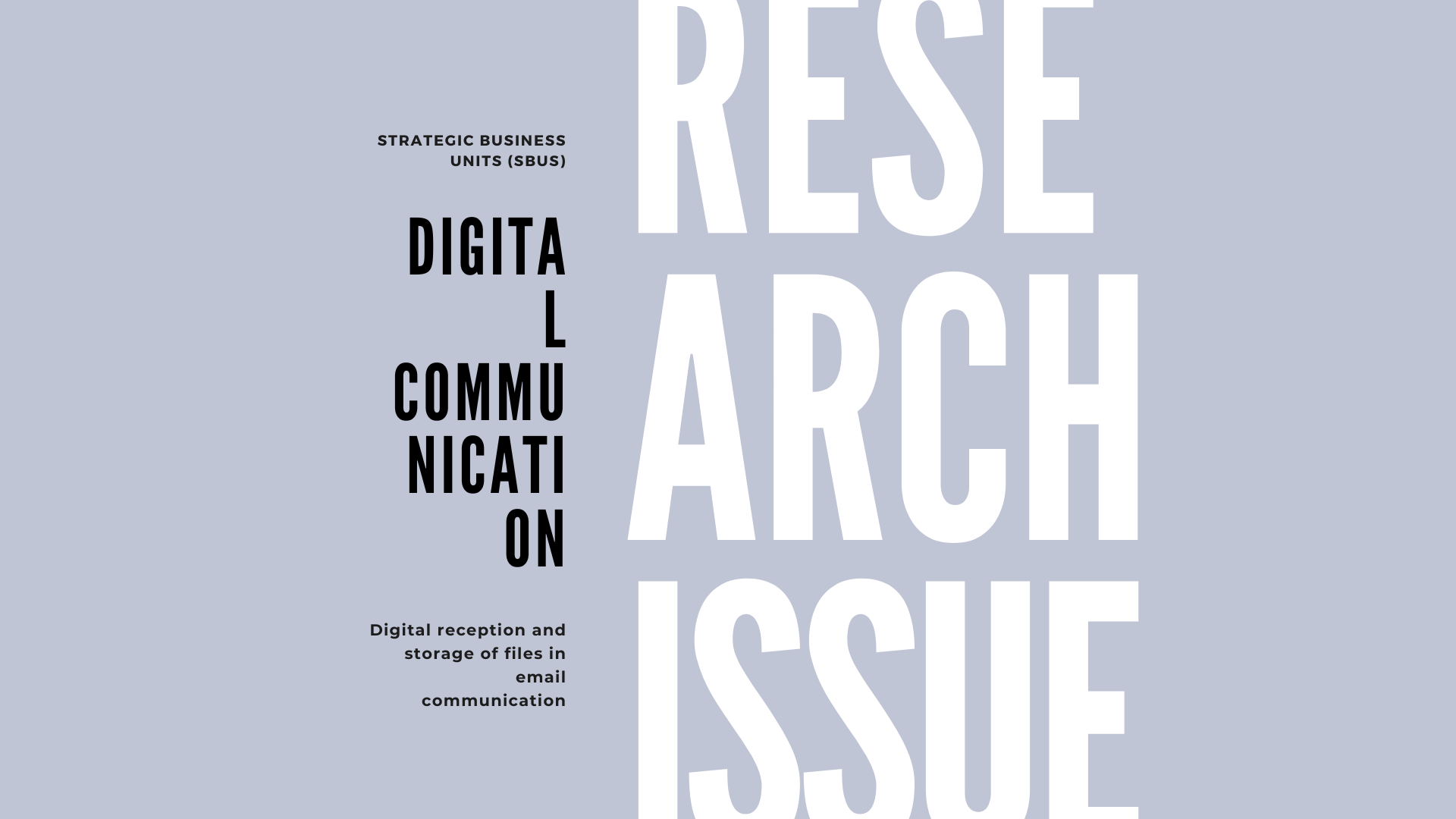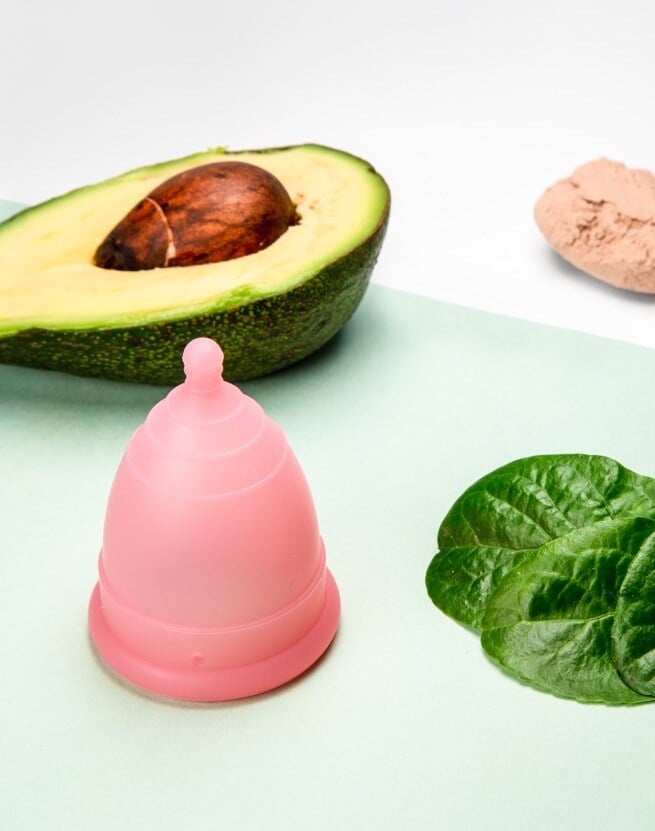The "killer app" of communication
Some authors, such as Mullen[1] and Bly[2], equate the rise of email with that of the invention of the printing press or the telegraph. This is because of the impact it has had on global communication, which has been as revolutionary as that of its predecessors, from which it inherited the massive nature and immediacy of electronic transmission. E-mail has added to these great characteristics the possibility of digital reception, classification, and storage of a large number of files of different formats (audio, video, image, multimedia), thus reinterpreting written communication and giving it a Copernican twist.
Thanks to this innovation, the e-mail has reached an intangible conception and has become an electronic application aimed at optimizing communication, making it instant, affordable, diverse, and very economical, characteristics that have made it an indispensable means of communication.
This last statement is echoed in the data from the Email Statistics Report, which shows that email usage is increasing on both a personal and business level. In addition, it has become the main reason why users browse, but the most interesting thing is that the communicative function has been followed by an identity function, which has made email the requested address for logging into any kind of online service, be it social networking, instant messaging, shopping, or education, so that giving your email is now synonymous with giving your identity online.
The impact of this communication phenomenon is such that more than half of the world's population uses email since Hotmail launched in the 1990s. By 2021, the number of users will be more than 4,100 million, rising to more than 4.5 billion by the end of 2025[3]. If we compare this data to the first 400 users in 1978[4], the difference speaks volumes about the value email has reached in all societies around the world.
.jpg)
Why is email so relevant?
Although e-mail is similar to a postal letter, it differs from it in that it is shorter, but more importantly, it is untouchable and can be sent in seconds over the Internet, which is not only faster but also more efficient than via the postal service. On the other hand, the absence of elements such as paper, ink, stamps, or transport significantly reduces costs.
Another peculiarity of email is that, despite its brevity and simplicity, it offers the possibility of attaching large amounts of data such as images, animations, videos, or links to content that, in a physical format, would represent a large increase in cost due to the volume, material, and shipping.
These qualities did not go unnoticed and just 7 years after its birth in 1971, Gary Thuerk sent the first commercial email promoting digital devices to 400 users of the pioneer network ARPANET[6]. From then on, the potential of email in business became obvious, because the mass and simultaneous distribution of advertising through an email service were possible and incredibly cheap. We are talking about the beginning of email marketing and digital marketing, and unfortunately, also spam.
However, in the 1990s, with the advent of the Internet, this practice reaches and exceeds its zenith, necessitating regulation, such as CAN-SPAM, to protect the privacy of users, because of its low cost and global reach, e-mail became an extremely convenient tool for development and frictionless commerce [7], but it was necessary to regulate this new use.
Email marketing
We have already said that email is essentially an electronic application for streamlining communication that is instant, affordable, versatile, and very economical. It was originally intended for face-to-face communication, but it has already overcome that barrier and become a tool for optimizing communication in businesses. This fact has led to what we now call email marketing. This is a functional business strategy[8] that focuses on sending commercial email messages[9] to customers from the database who have previously given their consent to receive commercial information.
Anatomy of marketing e-mail
Because of its similarity to the letter, one could say that the e-mail belongs to the epistolary genre, therefore its structure, similar to the latter, is divided into three parts: Header, Body and Closing. However, in the case of e-mail marketing, there are some peculiarities, because of its structure it would be more appropriate to speak of a footer rather than a closing, although there are authors who consider only the first two parts[10].
The header information
As with the letter, it is a series of lines at the top devoted to the "subject" or reason, the "sender's" e-mail, the "recipient's" email, and the "date" of the message. The header is a simple and very obvious element, as can be seen in Figure 1, and perhaps that is why the ordinary user does not pay much attention to it. In fact, it is not uncommon to receive an e-mail without a subject line, but for e-mail marketing, it is of utmost importance, which is exactly true for the first two aspects: the "Subject" line and the "From" line of the sender.
It is important to understand that the header is subject to a large number of regulations by CAN-SPAN 15 USC 7704, which states that: "It is unlawful for any person to initiate the transmission, to a protected computer, of a commercial electronic mail message, or a transactional or relationship message, that contains, or is accompanied by header information that is materially false or materially misleading". That is why the header is so important for e-mail marketing.

- The "Subject" line: It is one of the most important elements of the header in e-mail marketing, as it describes in a few words the reason for sending the message. In plain text e-mails, it could be equated with the title of the e-mail, so it requires a high level of predictability that allows the user to intuit the content.

In HTML e-mails, this rule is not necessarily satisfied, so the subject and title may or may not match. The importance of this line is that many users will open the e-mail or classify it as spam based solely on the subject line. In fact, 35% of recipients open an e-mail based on the subject line[11], which is not surprising as this is a natural way to prioritize messages.

- The “From” line: Essentially, this is the space where the sender's e-mail address is given. For some specialists, it is the most important part of the header because a large number of users identify it before opening the email. In fact, 68% of Americans rely on this line to open an e-mail, and, depending on this line, 43% send it to Spam. It is therefore a line that must express legitimacy and integrity, not only to comply with current regulations but also to gain the trust of users.
The body of email marketing
Because of its connection to the letter, the body of the email is structured similarly, that is, it expresses the content through introductory paragraphs that clearly state the idea and serve as arguments that initially justify that idea.
This is especially true for plain text emails. However, in many cases, paragraphs have given way to very specific lines that express the message very succinctly. Add to this compendium of paragraphs the closing line of no more than two words, the signature lines, and the postscript to structure a very concise and direct message.

Now, HTML e-mail is considerably different, since the textual content is usually complemented with images, videos, links, and even calls to action, getting closer to the structure of a landing page, since, like this, it exposes a unique proposal sales through a main and a supporting headline, a great hero, a set of benefits, graphic complements (infographics, illustrations, etc.) as well as a call to action represented by one or more buttons[13]. The reason for such similarity is due to the fact that both the landing page and the HTML e-mail are based on persuasive discourse, which uses likeability, third-party opinions, authority criteria, or the association with positive aspects, with the only one in order to influence the user's decision ”[14].

The footer
This is a unique element of HTML e-mails which is located at the bottom of the page just like on a landing page or web page. It consists of copyright, contact, and legal information, as well as some links to the main areas of the site. In e-mail marketing, however, the footer is rather synthetic. In many cases, it is limited to information about the address, social networks, privacy, copyright, and the option to unlink. Due to the regularity of this, the footer seems to be the default location for this last feature, which is also required by law, because although e-mail marketing must be based on the consent of users, it must also provide, by law, the possibility for them to unsubscribe from the mailings at any time.

Email Marketing Funnels
From Gunelius' point of view, it would be more appropriate to speak of e-mail marketing funnels than types, because in reality there can be many types and it is difficult to list them, but they all revolve around persuasion for three very specific things[15]:
- To acquire the mail of potential customers relevant to the subscriber list. This goal is based on reciprocity and is achieved with meaningful and useful suggestions that involve low risk and have a value greater than or equal to that of the user's e-mail. To this end, potential customer magnets[16]are created, messages whose purpose is to entice through free content such as e-books, reports, infographics, images, audio, or live webinars, as it is valuable content for which a potential customer can be persuaded to share their e-mails. This type of funnel is called acquisition.
- To nurture customers and keep them engaged. "It's about building relationships with potential, current and former customers"[17] through likeability, which is another important element of persuasion because not everyone is ready to buy the moment they get on the list. On the other hand, this strategy helps retain key customers and free up those who will never make a purchase. Generally, this is done through free messages like "Welcome!" or "Our anniversary offers...", "Free Trials", "Surveys", "Top of Mind" or "Cancellations". This other type of funnel is called nutrition.
- To convert prospects into buyers. These messages contain calls to action aimed at different purposes, such as recovering an abandoned cart, updating a trial, a free demo, cross-selling and add-ons, referring a friend, and loyalty programs. Nevertheless, they all serve the same purpose: the urgent execution of an action, be it a purchase, a download, or an upgrade action at that moment. This last funnel is called a conversion funnel. In many cases, it is based on another persuasion principle, which is fear, because "people seem to be more motivated by the fear of losing something than the illusion of gaining it"[18].
The acquisition funnel in HTML e-mails
When talking about email marketing, it is common to hear that the most important thing is the list, when it would be more correct to say that the most important thing is building a custom list, because this ensures that the contacts added are relevant and that the e-mails are not marked as spam. This is exactly the goal of the first spiral of the marketing funnel: building a suitable mailing list that meets the specific needs of each company and the legal framework.
According to Hawkins, the proper way to achieve this goal is through a subscription processed through the company's own website[19]. To this end, the customer magnets described above are used. These are elements based on reciprocity, promoting messages with free material but valuable to certain users, up to the exchange for their email address, because let us not forget that according to CAN-SPAM, all commercial email messages must have the consent of users.
In 1 and 2 you can see clear examples of email marketing acquisition funnels. These are HTML emails that are structured much like a landing page: Header, Hero, Body, Footer, Call to Action, with the only difference being that the Header is there and the content is much more summarized. In both messages, the subject expresses an offer: "Webinar: How to make your product win on Amazon!", "Blog: FREE 3D florals; prototyping features for UX designers; including yoga photos ". The title, in turn, is expressed through rhetorical questions such as "Do you need a crash course on the dos and don`ts of selling on Amazon?" The purpose of which is to persuade users to change their behavior.
On the other hand, the call to action, although inherently compelling, is made by invitation formulas such as "Reserve your spot."; "Read more."; or "Click here to subscribe to this newsletter." In addition, the specificity is that the user is redirected to a registration form whose common factor is the e-mail address. However, depending on the purpose of the list, you can enter additional information to get a more specific profile of the user. Another important aspect is the permissions that allow the user to join the list or not. This fact not only corresponds to a legal aspect but also ensures a list of interested parties who are really interested in the product.

The nutrition funnel in HTML emails
Once the list of clearly interested prospects is established, you need to give them time to feel ready to convert, a process that can take days, weeks, or months, because not everyone is ready to buy when they get on the list[20]. So the process begins within the second ring of the funnel, which is to maintain the interest of not only the newly acquired potential customers but also those who have already bought or are buying today. In this sense, the nutrition funnel consists of building relationships that are reciprocal, because receiving something evokes the feeling of giving something in return.
In e-mail marketing, this is ideally done through messages that inspire trust, interest, but most importantly, likeability. In this way, the company is positioned as the first option in the mind of each person on the list. To achieve such an effect, we resort to:
- welcome messages
- free trials
- anniversary messages
- polls
- newsletters
In 3 and 4, you will see two types of nutrition emails: welcome and free trials. The structure is still in the landing page style: Header, Body and Footer, Hero, Main Headline, Call to Action, and Benefits. As in the previous funnel, the difference is in the subject and title, whose speech varies from propositional and inviting to sympathetic and submissive. In the first case, the matter consists of a formal greeting, with which the first approach of a relationship usually begins, "Nice to meet you, Nelson", while in the second it consists of saying something such as, "Full package: get the most of pdfFiller ". In both cases, they aim to establish a warm and personal relationship with the user. As for the call to action, the imperative tone that characterizes it is greatly toned down and becomes a friendly invitation, and on the other hand, it no longer redirects to a spreadsheet, but directly to the website.

The conversion funnel in HTML emails
As mentioned earlier, the messages of this funnel aim at the imperative and urgent execution of an action, be it a purchase, an update, or some other action at a specific time, in order to bring the customer into the third ring of the conversation. These messages contain calls to action aimed at the following:
- an abandoned cart recovery
- a trial update
- a free demo
- a cross-sell and add-ons
- a refer-this-item to a friend
- loyalty programs
Despite their diversity, the messages in this funnel have only one purpose: to provoke an urgent response. This explains why many of them are based on the argumentative principle of scarcity, because "people seem to be motivated more by the fear of losing something than by the illusion of gaining it". In this way, subjects and titles such as, "40% off Grammarly Premium ends TODAY!", "Only for 48 hours: Get 50% off Academia Premium", or "Seize the day: 3 months Spotify Premium for free" become common.
In 5 and 6, there are two conversion emails: one for the update and one for the advertisement. Again, the landing page structure is repeated, as is the description of benefits, which seems to be common across the different funnels. However, both the subject and title no longer revolve around suggesting and inviting, or sympathizing and giving, as in the previous funnels, but around the alert and urgent seme expressed in the imperative tone of the subject and title or subtitle.
In the case of our conversion examples, the subject expresses the alert, "40% off Grammarly Premium? That's music to our ears," Jira Cloud mobile is here! ", while the titles and subtitles express urgency:" Strike the right note "," Download Jira Cloud for mobile and get a head start on your work from anywhere ". The call to action also reinforces the tone of urgency with the categorical imperative of the verb: "Upgrade to Premium", "Get Jira Cloud for mobile".

Email marketing HTML conclusions
Because of its nature, the e-mail belongs to the epistolary genre whose structure it retains: Header, Body, and Closing. In marketing, however, the HTML variant of the e-mail differs in some respects from its plain text counterpart, as the body of the email is clearly influenced by the landing page. The result is a hybrid structure with the header of a letter, where the subject line and sender line predominate, but again with the body of a landing page consisting of a main headline, a hero, benefits, graphic complements, and a call to action; finally, a footer with information on address, social networks, privacy, copyright and the option to remove the link.
This seems to be an equivalent structure in all spirals of the marketing funnel: Acquisition, Nutrition, or Conversion. However, the real differences between the spirals of the funnel seem to be discursive in nature, as the discourse changes depending on the objective of each spiral.
For this reason, we can observe that in the acquisition funnel, the propositional and incentive discourse is predominant, expressed through rhetorical formulas that invite the users to change their behavior in favor of the said proposition. The call to action, on the other hand, while inherently compelling, is tempered by more subtle, inviting formulas. It also has the purpose of redirecting the user to a sign-up form.
In the nutrition funnel, on the other hand, the discourse transforms from purposeful to inviting to sympathetic and submissive, expressed through greeting formulas and generous expressions aimed at establishing and maintaining a relationship with the user. As for the call to action, as in the previous funnel, it softens the imperative tone that characterizes it and becomes a friendly invitation. Moreover, it no longer redirects to a spreadsheet, but directly to the website.
Regarding the conversion funnel, both the subject and the title revolve around the alert and urgent semes, which is manifested in the imperative tone of the subject and the titles or subtitles. Similarly, the call to action reinforces the tone of urgency through the categorical imperative mood of the verb.
As for the conversion funnel, both the subject and the title revolve around the alert and urgent semes, manifested in the imperative tone of the subject and the title or subtitle. The call to action also reinforces the tone of urgency through the categorical imperative mood of the verb.
References:
[1] Mullen J. and Daniels D. (2009). Email Marketing An Hour a Day. Wiley. Canada.
[2] Bly R. (2018). The new email revolution. Skyhorse Publishing. United States of America.
[3] The Radicati Group, INC. (2021) Email Statistics Report, 2021-2025. Recovered https://www.radicati.com/wp/wp-content/uploads/2021/Email_Statistics_Report,_2021-2025_Executive_Summary.pdf.
[4]Scott, E. (2016).Email Marketing Beginners Guide to Dominating The Market with Email Marketing
[5] The Radicati Group, INC. (2021).
[6]Scott E. (2019). Email Marketing: Beginners Guide to Dominating the Market with Email Marketing.
[7] Controlling Assault of NonSolicited Pornography and Marketing Act of 2003", or the "CANSPAM Act of 2003. Recovered https://www.ftc.gov/enforcement/statutes/controlling-assault-non-solicited-pornography-marketing-act-2003-can-spam-act.
[8] Stiphens, E., Martin, B. (2019).Business Policy and Strategic Management. ED-TECH-PRESS. London.
[9] Controlling Assault of NonSolicited Pornography and Marketing Act of 2003.
[10] Bly R. (2018).
[11] Hussain. A. (2021) 22 Eye-Opening Statistics About Sales Email Subject Lines That Affect Open Rates [Updated for 2020]. Recovered https://blog.hubspot.com/sales/sales-email-subject-lines-that-get-prospects-to-open-read-and-respond.
[12] Bly R. (2018).
[13] Unbounce. (2021).The Anatomy of a Landing Page. Recovered https://unbounce.com/landing-page-articles/the-anatomy-of-a-landing-page/.
[14] Rojas, A. (2021). Design to persuade: the 9 most dominating design principles on landing pages. Recovered https://www.quo.agency/insights/design-to-persuade-the-9-most-dominating-design-principles-on-landing-pages.
[15] Gunelius, S. (2018). Ultimate Guide to Email Marketing for Business. Entrepreneur Press.
[16] Gunelius, S. (2018).
[17] Gunelius, S. (2018).
[18] Rojas, N. (2021). The landing page: technology and persuasion. Recovered https://www.quo.agency/insights/the-landing-page-technology-and-persuasion.
[19] Hawkins, J. (2019). Email Marketing Tips and Tricks.
[20] Gunelius, S. (2018).





